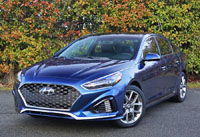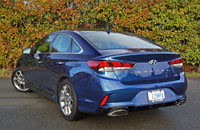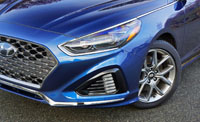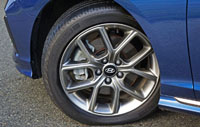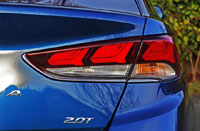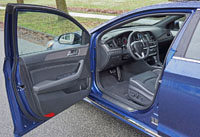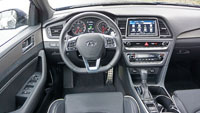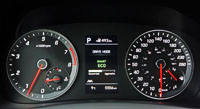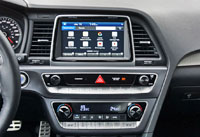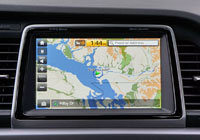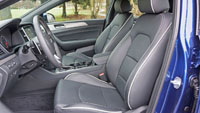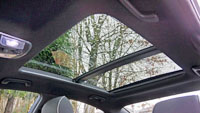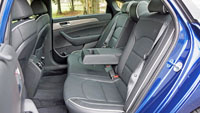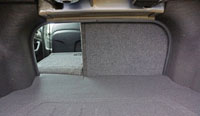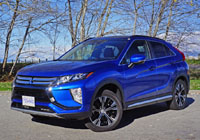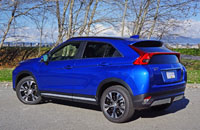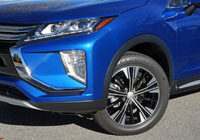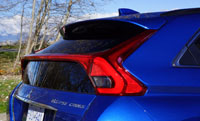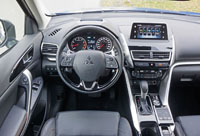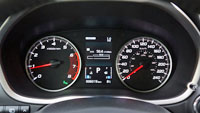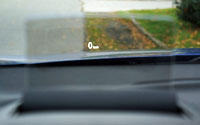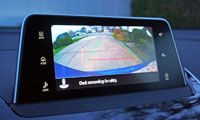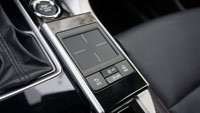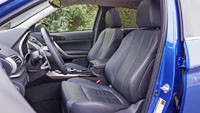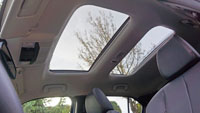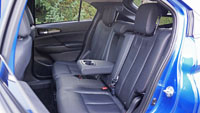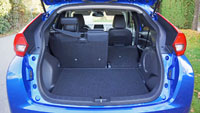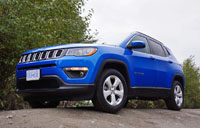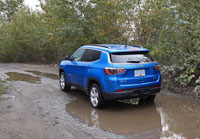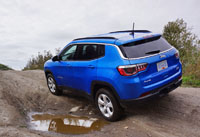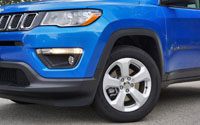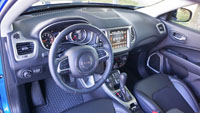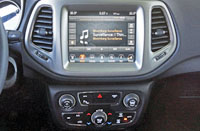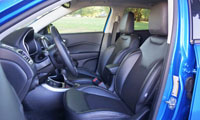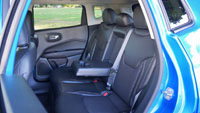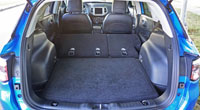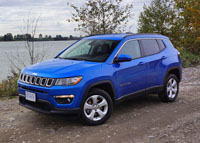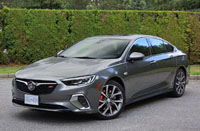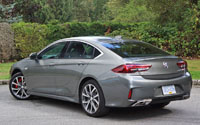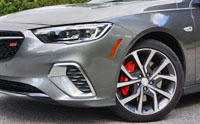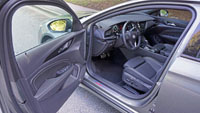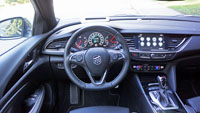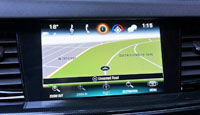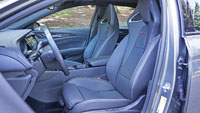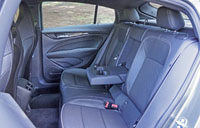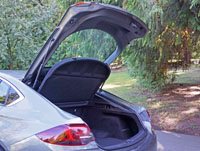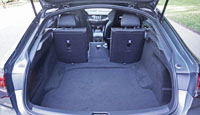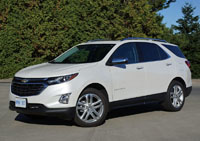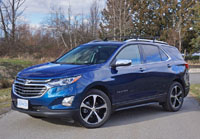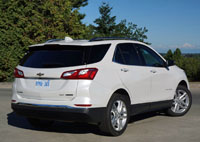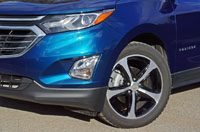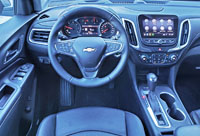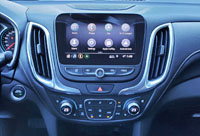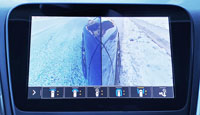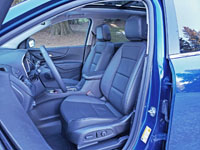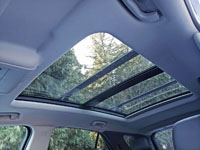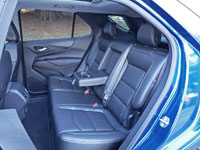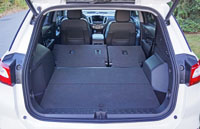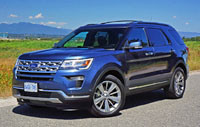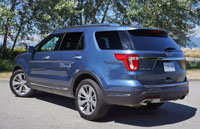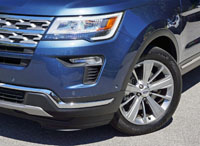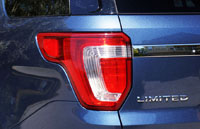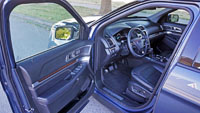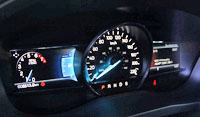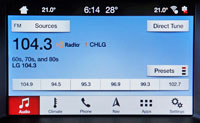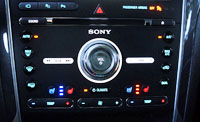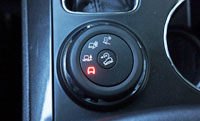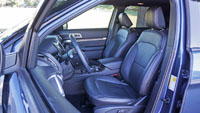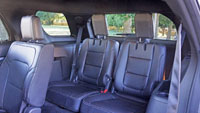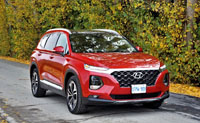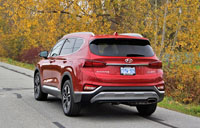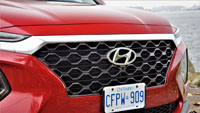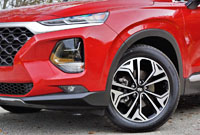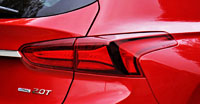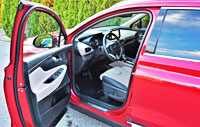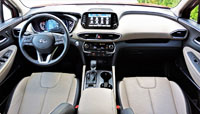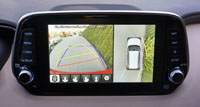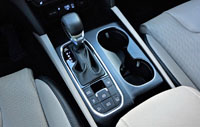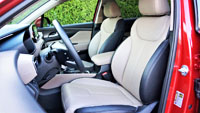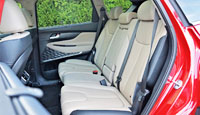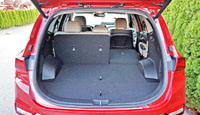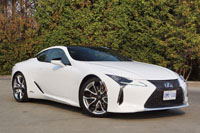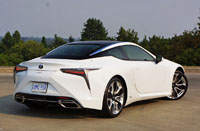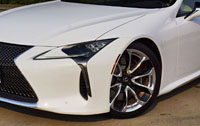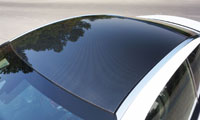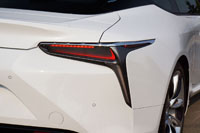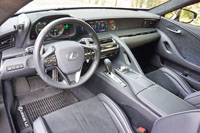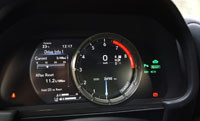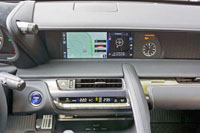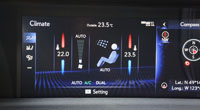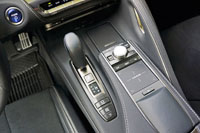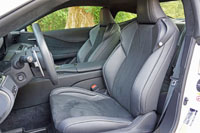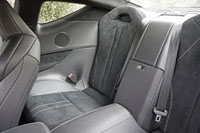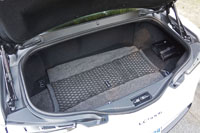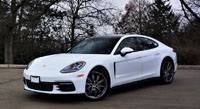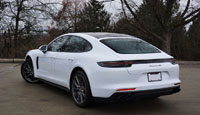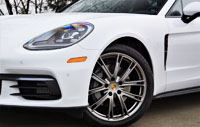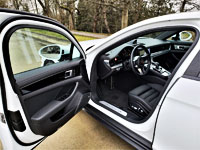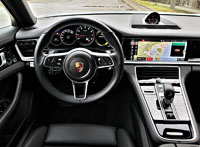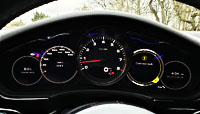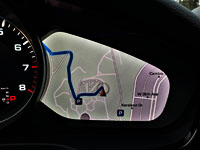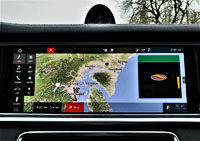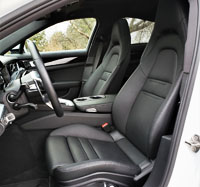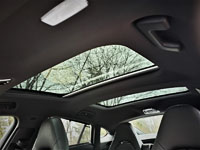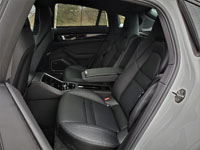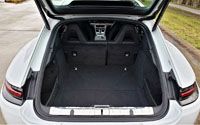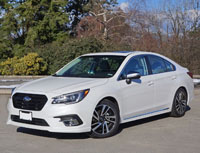
The new 2020 Legacy is starting to arrive at Subaru dealers across Canada as I write this review, and fans of the current 2019 model should like what they see. The updated mid-size sedan gets renewed styling, revised engines, and a reworked interior, but exterior styling is so muted that most won’t notice the 2019 model leaving and the 2020 ushered in. So why am I covering yesterday’s Legacy when tomorrow’s is nearly hear? Subaru dealers have new 2019 models on their lots, and this very good car is available for very good prices.
As per CarCostCanada, a 2019 Legacy buyer can pocket up to $3,000 in incentives, and that’s before factoring in a personal discount derived from haggling or your trade-in. Follow this CarCostCanada link to learn about 2019 Legacy pricing, including trims, packages and individual options, plus you also need to find out about rebates and dealer invoice pricing that could save you thousands.
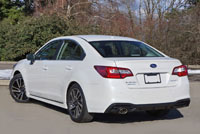
For a bit of background info, the Legacy was refreshed for 2018, which means this 2019 model was unchanged. The version reviewed here is in mid-range $31,695 Sport trim, which hovers above the base $24,995 2.5i CVT, $28,295 Touring, and $29,795 Touring with EyeSight; EyeSight being Subaru-speak for its suite of advanced driver assistance systems including auto high beams, adaptive cruise control, autonomous emergency braking, rear proximity warning with reverse auto braking, blindspot detection, lane departure warning and lane keeping assist. Sport trim comes standard with EyeSight, as does top-line $33,795 Limited 2.5i trim and the $36,795 Limited 3.6R.
As you may have guessed, 2.5i and 3.6R designate the Legacy’s respective standard and optional engines, the latter having been replaced by the higher output 2.4-litre turbocharged four-cylinder introduced in last year’s Ascent mid-size SUV; the 2020 Outback crossover wagon gets this change too. Comparing the two engines shows 256 horsepower and 247 lb-ft of torque for the old 3.6R and 260 horsepower and 277 lb-ft of torque for the 2.4i, resulting in four more horsepower and 30 additional lb-ft of torque.
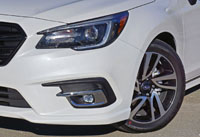
The base 2.5-litre four-cylinder gets updated too, but the 2020 model only gains six horsepower and two lb-ft of torque resulting in 182 horsepower and 176 lb-ft compared to 175 horsepower and 174 lb-ft of torque, but 90 percent of its parts have been upgraded, with straight-line performance improvements secondary to gains in fuel-efficiency.
This means the 2020 Legacy 2.5i has been designed to achieve an estimated 8.8 L/100km city, 6.7 highway and 7.7 combined Transport Canada rating compared to 9.3 highway, 7.0 city and 8.2 combined, while 2.4i fuel economy improvements from the old 3.6R equal 9.9 L/100km city, 7.3 highway and 8.5 combined compared to 11.9 city, 8.3 highway and 10.3 combined. With standard all-wheel drive the Legacy can’t quite measure up to most front-drive rivals in base trims, but it should be noted that even the old 3.6R is more efficient than the Camry’s optional V6.
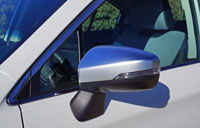
Instead of diving too deeply into the differences between old and new Legacy models, I’ll only mention some key points as this review continues. As stated at the onset of this road test, styling enhancements appear so insignificant that I would’ve been careful to call it a refresh if I hadn’t already been made clear it’s a full redesign. Strangely, Subaru Canada didn’t even mention styling in its 2020 Legacy press release, but this subtle redesign may help the outgoing sixth-generation model hold resale/residual values higher. I find both generations attractive enough while sportier than most competitors, while Subaru obviously isn’t trying to lure in potential customers by being extroverted, like Toyota is with its latest Camry.
Then again, the Legacy’s conservative styling may be a good reason its sales are slow. To but it into perspective to the just-noted Toyota, Subaru sold 1,298 Legacys from January 1 to September 31, 2019, which is just slightly more than 11 percent of the 11,579 Camrys delivered during the same three quarters. A more positive viewpoint is its success over the Kia Stinger, Mazda6, Honda Clarity plug-in, Buick Regal, Volkswagen Passat, and VW Arteon, while it came within striking range of the Kia Optima. This has it placing eighth out of 14 competitors, which isn’t too bad at all. Still, the Legacy’s tally pales when compared to Subaru’s own Outback that found 7,756 buyers over the same nine months, the tall mid-size crossover wagon being basically the same vehicle below the skin.
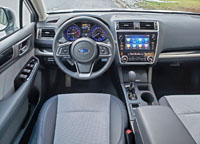
Success on the sales chart doesn’t always validate a given vehicle’s goodness or badness, however, and to that end the Legacy doesn’t labour from any disadvantages other than being a bit smaller than most mid-size sedan challengers. In fact, Subaru has an impressive record, achieving “Best Overall” brand in Consumer Reports’ most recent 2019 Annual Report on Car Performance, Reliability, Satisfaction and Safety, while it tied with Chrysler in the same publication’s “Best Road Test Score Mainstream” category. The Japanese brand also scored above average in J.D. Power’s latest 2019 Vehicle Dependability Study, but found itself below average in the same company’s 2019 Initial Quality Study. Nevertheless, the 2019 Legacy achieved top-spot amongst “Mid-Size” consumer sedans in Vincentric’s latest “Best Value In Canada” award, as did the Outback in its class.
After time well spent in this 2019 Legacy, I’m willing to bet that interior quality gave the car a boost upward in these various rating and award programs. Highlights include a premium-level soft composite dash top and instrument panel, the latter stitched across its lower edge in traditional Subaru blue, while the blue stitching theme trimmed the inner portion of the leather-clad sport steering wheel rim as well, plus each armrest and the leatherette-covered seat bolsters, the seats otherwise upholstered in an attractive light grey material.
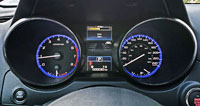
Additional cabin niceties included genuine-looking high-gloss carbon-fibre inlays on the instrument panel and doors, this conjoined to attractive satin-silver metallic adornment, while glossy black surface treatments combined with matte-finish black composites and even more satin-finish and chromed metal accents for an interior Legacy owners can be proud of. Front and rear door uppers receive the same luxuriously padded soft-touch composite as that on the dash, and Subaru also covers the front “A” pillars in cloth for to reduce noise and add yet more premium-class feel.
Even with the upcoming 2020 Legacy sporting a renewed interior boasting a gigantic 11.6-inch vertical display (aside from the new base model that only gets a 7.0-inch touchscreen), this 2019 outgoing model still looks very current. In fact, its 8.0-inch touchscreen (improved by an inch and a half over the base 2019 model) looks as good as most anything else in the class due to its big gloss-black surrounding surface area that extends outward from the centre stack as if it’s one massive display.
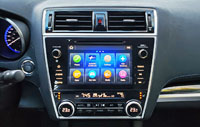
The actual touchscreen gets a deep blue background that’s detailed out with unique star graphics, this overlaid by colourful tablet-like tiles for selecting its various functions. The dynamic guideline-enhanced rearview camera is very good, while together with standard infotainment features such as Android Auto, Apple CarPlay and Subaru’s own StarLink smartphone integration system, other features include AM/FM/satellite/Aha radio, a CD player, MP3/WMA compatibility, a USB port and aux plug, SiriusXM advanced audio services, SiriusXM Travel Link, Bluetooth with streaming audio, and four speakers, while Touring and above trims include the bigger display as standard plus another USB port and two more speakers.
Those wanting a navigation system, much improved 576-watt, 12-speaker Harmon/Kardon audio, plus a heated steering wheel, heated rear outboard seats, leather upholstery, 18-inch alloys and more will need to opt for previously noted Limited trim, while items pulled up to the Sport model from lower trims include a 10-way powered driver’s seat with two-way power lumbar support that lined up with the small of my back fairly well, cruise control, and heatable front seats from the base model, two-zone auto HVAC, a powered moonroof, and fog lamps from Touring trim, and proximity keyless access with pushbutton start/stop along with a 5.0-inch LCD multi-information display within the gauge cluster from the Touring model with EyeSight.

As for this Legacy Sport trim, it gets unique 18-inch machine finished alloy wheels with black-painted pockets, LED headlamps with cornering capability, a gloss-black grille surround, satin-silver side mirror caps, chrome adorned side sill extensions, and a diffuser-like rear valance framing two large chromed tailpipes, but be informed this value-packed trim line will not be offered with the 2020 car. The new model’s sportiest trim sources its GT designation from Subaru’s storied history, and due to past GT’s getting engine upgrades will come exclusively with the more powerful 2.4i engine in both a new Premier model and a revised Limited trim.
Subaru’s legendary symmetrical full-time all-wheel drive with active torque vectoring comes standard as (almost) always, and it makes a considerable difference to how it drives in all conditions. We should remember that Subaru developed its AWD system on track and trail thanks to decades of World Rally Championship competition, and it still builds the awesome WRX that won so many WRC titles. Many don’t realize that Subaru rallied the Legacy as well, although not as successfully. It competed in Group A from ‘89 through ‘93, but its lone race win during its last year of competition was hardly as legend building as the Impreza’s trio of championships. Still, can you name another mid-size family sedan that’s even managed one single WRC win? Didn’t think so.
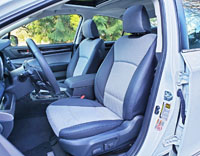
Therefore it makes sense the Legacy is one of the more enjoyable cars in its mid-size class to drive, not particularly for straight-line acceleration (it could really benefit from the WRX STI’s 310-horsepower turbo-four), but more so for its handling. Nevertheless it moves off the line with decent energy, at least when compared to other base powertrains in its segment, while its Lineartronic CVT provides smooth operation at all times.
Shift paddles provide a more hands-on driving experience, these combining with six stepped gears that make the continuously variable transmission feel closer to a conventional automatic, at least when not trying to extract everything out of the engine, but this said if you’re looking for the type of lightning-quick shifts offered by a dual-clutch gearbox or even a high-end premium-level automatic, this CVT won’t cut it. I sometimes used the paddles for downshifting, this process allowing for a sportier feel plus the benefit of engine braking down steep grades, but that was about it.
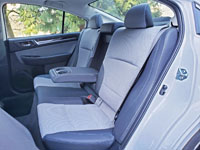
Subaru reminded that a CVT’s design can also help smooth out a vehicle’s ride quality, and it’s entirely possible this is one reason its ride quality is so good. Still, the Legacy handles well too, its fully independent MacPherson strut front and unequal length short/long arm double wishbone rear setup managing fast-paced curves with grace and composure, its 225/50R18 Goodyear Eagle LS all-seasons no doubt doing their part as well. It’s a confidence-inspiring car when driving quickly, plus it’s just as good at weaving through congested city traffic or stretching its legs on the highway.
Speaking of stretching one’s legs, Legacy offers plenty of room in all positions, particularly up front in the driver’s position where I had no trouble getting comfortable. I’m guessing most should fit in well thanks to good adjustability all-round. My long-legged, short-torso five-foot-eight body was able to position the seat ideally to reach the top portion of steering wheel rim when the tilt and telescopic steering column was pulled all the way back. This meant the driver’s seat was positioned farther back than most five-foot-eight drivers would need to, but fortunately this didn’t seem to impinge on rear seat legroom at all.
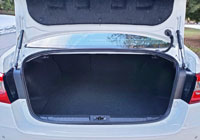
I had almost 12 inches from my knees to the backside of the front seat when positioned directly behind, plus room to totally stretch my legs out with winter boots stuffed below. Additionally, I had loads of room next to the window, plus a wide, comfortable folding armrest with dual cupholders in between, while there were three inches of space over my head, so a six-foot teen should squeeze into the back quite comfortably. As for back seat goodies, two USB charging points are included in upper trims, although bookworms won’t have the benefit of individual reading lights overhead.
There’s more than enough room for all kinds of cargo in the big 425-litre (15 cu-ft) trunk, plus it can be expanded by the usual 60/40 split-folding rear seatbacks, releasable via a set of handles under the rear shelf. This is where I make my regular request for 40/20/40-split rear seatbacks or at least a centre pass-through, which would allow long items like skis to be placed down the middle while both rear outboard seats can be put to use. Upgraded with rear seat warmers the Legacy would be the best ski shuttle in the class. All said there aren’t many mid-size sedan rivals that offer this level of back row seating/cargo flexibility, but you’d think automakers would be trying to make this more efficient segment as practical as possible instead of forcing those with active lifestyles to opt for an SUV.
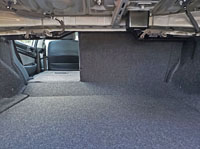
Minor gripe aside, you’d be well taken care of in a 2019 Legacy. According to The Old Farmer’s Almanac this winter will get more snow than average, which means an all-wheel drive vehicle will make your driving life easier and safer. On top of this, fuel isn’t about to get any cheaper, at least not permanently, so an AWD car might be ideal if your lifestyle allows. Only the new Altima, Stinger and Arteon provide standard AWD, but the latter two four-door coupes aren’t as practical as the Legacy and cost quite a bit more, while Buick’s Regal is more expensive and only offers AWD on its pricier trims. Therefore, if you want the added safety and performance of AWD in a regular mid-size sedan it’s a showdown between the Altima and this Legacy. You should try them both.
Story credit: Trevor Hofmann
Photo credit: Karen Tuggay

